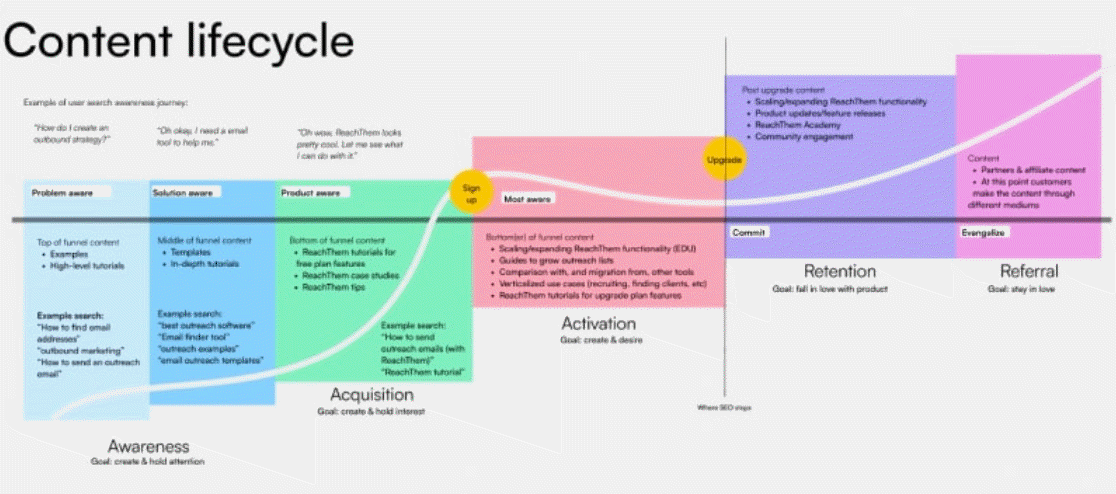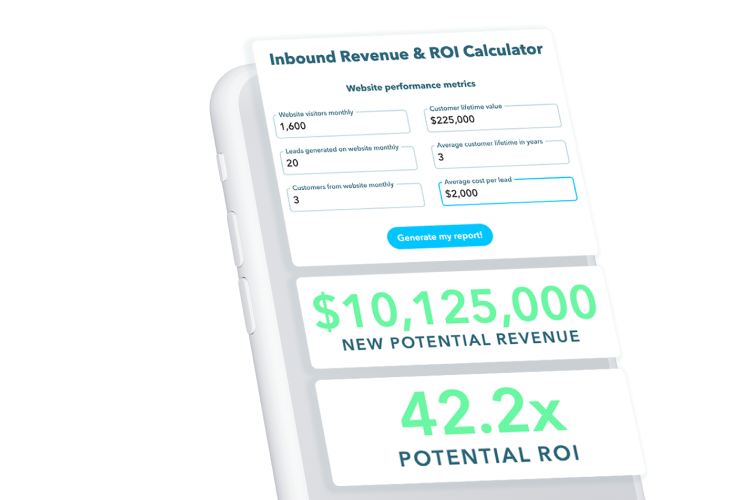 July 19, 2023
July 19, 2023 1829 Views
1829 Views  6 min read
6 min readContent marketing is a powerful growth influencer that fills your sales funnels with qualified leads. Software-as-a-Service (SaaS) content strategy differs slightly from Non-SaaS industries’ marketing as you sell technology and services. Marketing is responsible for selling the product and the quality service behind it. SaaS buyers research products through digital channels (your website, blog articles, third-party review sites, social media, and more), making SEO essential to effective marketing.
Let’s look at some numbers as to why SaaS content marketing is important.
SaaS content marketers can better understand their audience at different stages of the funnel:
 Image credit: marketermilk, SaaS content marketing: From 0 to 500k visitors a month
Image credit: marketermilk, SaaS content marketing: From 0 to 500k visitors a month
SaaS content strategy starts with understanding the content lifecycle. Problem aware> Solution aware> Product aware> Most aware
And within the content cycle, specific metrics include Awareness, Acquisition, Activation, Retention, and Referral (AAARR). These metrics are a set of KPIs you can use to evaluate your progress.
Awareness – The interactions before you know who the person is. Metrics can include website visits or click-through rates.
Acquisition – Lead capture to activation. Activation metrics give you an understanding of whether your marketing strategies are working. For example, you can look at contacts generated or leads generated.
Activation – In SaaS, this could be where someone signs up for your product without talking to sales. Signup could be for a paying or non-paying customer (trial). Metrics to check: Lead-to-sign-up conversion rate: How many leads are signing up to use your product?
Retention – You keep existing customers satisfied. Retention metrics could include retention rate or churn rate.
Referral – Turning customers into evangelists. Common metrics are review rates and referred business. And just like any content strategy in any industry, you still need to:
A top-of-funnel content strategy focuses on attracting and engaging an audience of potential customers in the early stages of their buyer’s journey. It is key to filling your sales pipeline. As a business owner, you need to reframe your TOFU marketing content for the BENEFITS of what the product does, not the product itself. When you do this, you’ll see more engagement and click-throughs. Top-of-funnel content is broader and targets a wider audience. The content educates and answers common questions or pain points. Here are a few reasons why TOFU content rules and why you need this content type on your site:
The only way to get qualified leads is to keep filling the top of the funnel. Content formats can include: Informative blog posts – they are a staple when it comes to TOFU. They address common pain points, topics related to your industry and help demonstrate your expertise.
Videos – short videos can explain your SaaS solution. You can provide tips or showcase customer success stories.
Social Media Content – leverage social media platforms to share bite-sized content like tips, quotes, statistics, or behind-the-scenes glimpses of your SaaS company. Whatever format you choose, always create clear conversion pathways to the goals you’re trying to achieve: a free trial or demo.
The Middle of the funnel, or the consideration stage, effectively moves leads toward conversions.
The content can include:
Webinars – Hosting webinars is an effective way to engage your audience and establish thought leadership. Conduct webinars on relevant topics, such as industry trends, best practices, or solving common challenges. Webinars allow for live interaction and Q&A sessions and can be recorded for on-demand viewing.
Whitepapers/Case Studies – Showcase real-life examples of how your SaaS solution has solved problems and delivered value to your customers. Case studies provide social proof and build trust with potential customers who can relate to similar challenges. A case study can be used in both the consideration and decision stages.
“A good case study will appeal to the emotions and logic of the persona by providing detailed information and quantitative data on the final solution.”
YouTube tutorials – Teach in-depth what your product does to help your customers’ problems. This stage is more about highlighting the differentiators through product comparisons.
As prospects near the end of the buyer’s journey, they evaluate providers down to specific or specialized offerings. Similar to the consideration stage, writing on comparisons or alternatives can be integral to your SaaS content strategy. Use a conversion keyword strategy—keywords that hone in on “best x software” or “competitor alternatives.”
For example, ClickUp vs. Monday. Your audience knows they want a project management tool. They’re comparing the features and benefits to help guide them in their decision. This is an easy SEO tactic —creating ‘vs.’ or ‘alternative’ pages.’ Another example is Salesforce vs. HubSpot. Both platforms provide sales teams with a solution. The example shows the differences when deciding one over the other.
The content you create to answer search intent at this stage isn’t the type of content that attracts a wide audience like the top-of-the-funnel. It is particular and geared toward the purchase. In the video below, Grow and Convert shares a bottom-of-the-funnel approach to growing a SaaS business using content marketing.
Depending on the nature of your brand, buyer persona, and the specific buyer’s journey, content types can be shifted for success to each funnel stage, provided it’s crafted with that individual buyer’s journey in mind. As Content Marketing Institute points out, a white paper could convince a customer to purchase if it focuses on the significance of the change being considered. Similarly, a case study could be suited to the top-of-the-funnel if presented from the standpoint of educational awareness.
Also Read – SaaS Content Marketing Agency: Everything You Need to Know
A SaaS company’s content strategy requires defining campaign goals, evaluating your competitors, focusing on your audience with in-depth research, creating content mapped to the entire customer journey, and consistently publishing content. Building a software solution is just the first step. Creating content to become recognized as the number one solution requires expertise in content creation and production that will attract the right audience and make you the most memorable when your customers are ready to purchase.
Responsify helps B2B organizations grow by creating educational and engaging content for their audience to drive traffic, generate leads faster, and rank higher. With Responsify, you’ll immediately have an entire team of dependable and cost-effective talent at your fingertips. We’d love to understand your challenges and help you explore new opportunities. Click here to book your SaaS Content Strategy Session now!
